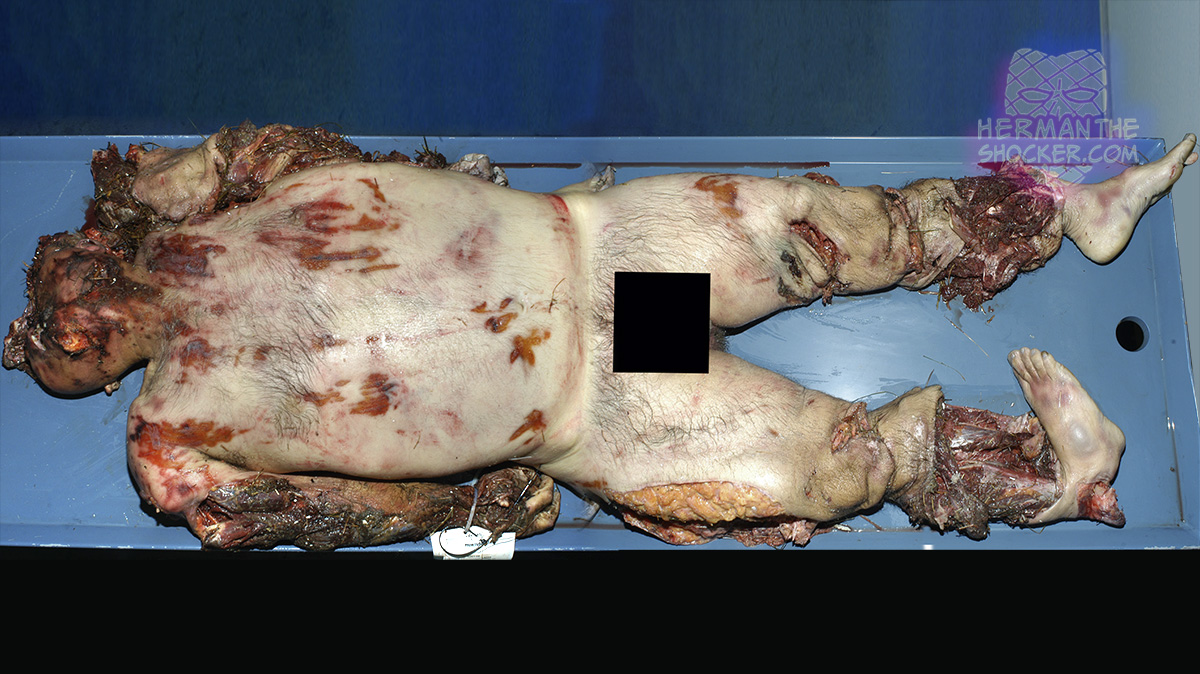This male individual lost control of his glider shortly after take-off and flipped upside down. The glider then crashed to the ground. The cause of death was multiple injuries sustained in a glider accident.
The body was extensively traumatized with severe craniofacial, brain, and spinal injuries. The individual had extensive destruction of the craniofacial skeleton with disruption of the scalp and cranial vault and loss of cranial contents. There was a loss of facial features above the mouth and extensive damage to the lower lip and chin. There was destruction of the upper airways. The larynx was fractured.
There was extensive deformity of the chest with multiple bruises and abrasions. The chest wall was extensively disrupted with fracture of all ribs in multiple lines and fractured manubrium and sternum. Both hemidiaphragms were disrupted. There were extensive abdominal injuries associated with a ruptured heart; lacerated aorta; lacerated lungs, liver, and diaphragm; and a contused bowel. There was complete avulsion of the left upper limb exposing the thoracic cavity. The left clavicle was fractured. There was extensive disruption of the left upper limb with degloving and comminuted fracture of the humerus; radius and ulna; and carpal, metacarpal, and phalangeal bones. This was associated with extensive disruption of soft tissues. There was laceration over the lateral aspect of the right shoulder and a degloving injury of the right upper limb extending from the axilla to the dorsum of the hand with underlying comminuted fracture of the right humerus; radius and ulna; and carpal, metacarpal, and phalangeal bones.
There were degloving injuries to the right and left legs, which exposed the underlying fractured femora, tibiae, and fibulae and disrupted soft tissues. The left and right ankle joints were also disrupted. The pelvis was fractured with wide diastasis of the pubic symphysis.
The multiplicity and severity of the trauma are in keeping with a high-force injury associated with the crash of a glider being towed by a powered aircraft.
Postmortem CT images showed extreme disruption of the skull and post-cranial skeleton, especially the lower limbs. Musculoskeletal injuries often account for over half the traumatic findings following aviation accidents. The postmortem CT showed artifact in the superior femoral shafts bilaterally. This is a useful finding as it indicates the presence of metal, which was a metallic fixation of superior femoral shaft fractures (healed). These plates may have identification numbers that can be retrieved at autopsy, or CT images could be compared with antemortem radiographs to confirm identity.
Latest posts













